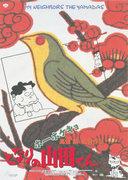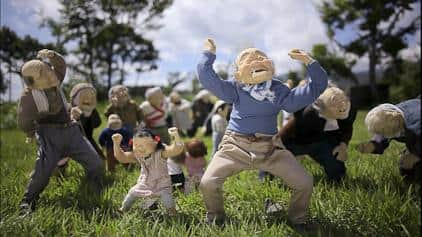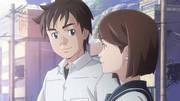The appeal and reviews of "My Neighbors the Yamadas": A unique family story

"My Neighbors the Yamadas": Poetry of the Everyday and the Beauty of Watercolor Paintings■Overview of the work"My Neighbors the Yamadas" is a feature-length animated film produced by Studio Ghibli and released in 1999. Directed by Takahata Isao, it is based on the newspaper comic strip "My Neighbors the Yamadas" by Ishii Hisaichi. This film broke away from cel animation and was the world's first watercolor-style full digital animation. It was released on July 17, 1999, distributed by Shochiku and Studio Ghibli (Tokuma Shoten), has an Eirin number of 115537, a total running time of 104 minutes, and one episode. Copyright © 1999 Ishii Hisaichi, Hata Jimusho, Studio Ghibli, NHD. ■ StoryThe Yamada family consists of five people: Grandma Shige, the married couple Takashi and Matsuko, and Noboru and Nonoko. The story depicts the daily life of the Yamada family, interspersed with episodes such as Nonoko going missing and Takashi going to preach to a motorcycle gang. In addition, the story is interspersed with haiku by Matsuo Basho, Yosa Buson, and Taneda Santoka, depicting the changing of the seasons as a seasonal almanac. The ordinary yet dramatic days of the Yamada family are depicted with humor and warmth. ■Explanation"My Neighbors the Yamadas" is the world's first film to break away from cel animation and be produced as a fully digital watercolor-style animation. This style of drawing is deep and gives off a unique warmth. Although it is based on the original newspaper comic strip, the animation incorporates punchlines and themes not found in the original, giving the story more depth. It can be said to be a work that brings together the meticulous direction of director Isao Takahata and the technical capabilities of Studio Ghibli. ■Cast
■ Main staff
■ Main Characters
■ Theme songs and music
■ Evaluation and impressions"My Neighbors the Yamadas" offers deep empathy and warmth to the audience by poetically depicting the small everyday events. The watercolor-style fully digital animation is a departure from traditional cel animation, depicting the life of the Yamada family with a more realistic and soft touch. This work, which brings together director Isao Takahata's meticulous direction and Studio Ghibli's technical capabilities, shows viewers new possibilities for animation and has the power to make them re-examine the beauty of family ties and everyday life. Particularly impressive is the way that the film uses haiku poems to express the changing of the seasons. Haiku poems by Matsuo Basho, Yosa Buson, and Taneda Santoka add color to the story, richly depicting the sense of the seasons. The selection of inserted music is also excellent, with a wide range of genres from classical to pop adding excitement to the story. In particular, the fact that director Takahata Isao himself translated the Japanese lyrics of "Que Sera Sera" shows his deep love and dedication to the film. The cast is also impressive, with veteran voice actors such as Yukiji Asaoka, Toru Masuoka, and Masako Araki playing the Yamada family members. Yukiji Asaoka's role as Matsuko in particular leaves a strong impression on the audience, with her exquisite expression of the humor and warmth of the Kansai dialect. Akiko Yano's unique voice quality and singing ability as Ms. Fujiwara also adds depth to the story. ■ Recommendation points"My Neighbors the Yamadas" is a work that provides deep empathy and warmth to the audience by poetically depicting the small everyday events. The watercolor-style fully digital animation is a departure from traditional cel animation, depicting the life of the Yamada family with a more realistic and soft touch. This work, which brings together director Isao Takahata's meticulous direction and Studio Ghibli's technical capabilities, shows viewers new possibilities for animation and has the power to make them re-examine the beauty of family ties and everyday life. Particularly impressive is the way that the film uses haiku poems to express the changing of the seasons. Haiku poems by Matsuo Basho, Yosa Buson, and Taneda Santoka add color to the story, richly depicting the sense of the seasons. The selection of inserted music is also excellent, with a wide range of genres from classical to pop adding excitement to the story. In particular, the fact that director Takahata Isao himself translated the Japanese lyrics of "Que Sera Sera" shows his deep love and dedication to the film. The cast is also impressive, with veteran voice actors such as Yukiji Asaoka, Toru Masuoka, and Masako Araki playing the Yamada family members. Yukiji Asaoka's role as Matsuko in particular leaves a strong impression on the audience, with her exquisite expression of the humor and warmth of the Kansai dialect. Akiko Yano's unique voice quality and singing ability as Ms. Fujiwara also adds depth to the story. This film is perfect for the whole family, and can be enjoyed by both children and adults. It is especially recommended for those who can feel emotion and laughter in the small things of everyday life, those who are interested in watercolor-style animation, and those who like haiku and classical music. It is also a must-see for fans of Studio Ghibli and director Isao Takahata. Related information"My Neighbors the Yamadas" has a unique style and theme compared to other Studio Ghibli works. It also has in common with "Grave of the Fireflies" and "Only Yesterday," both directed by Isao Takahata, in that it depicts the small, everyday events. It also stands out in terms of its style and theme compared to other Studio Ghibli works, such as "My Neighbor Totoro" and "Spirited Away." Furthermore, this work is also noteworthy for being the first watercolor-style full-length digital feature film in the history of Japanese animation. It can be said that it had a major impact on the development of digital animation thereafter. In addition, the original newspaper comic "My Neighbors the Yamadas" by Ishii Hisaichi is also popular for its humor and warmth, and its essence has been faithfully retained in the anime adaptation. "My Neighbors the Yamadas" is a work that provides deep empathy and warmth to the audience by poetically depicting the small everyday events. The watercolor-style fully digital animation is a departure from traditional cel animation, depicting the life of the Yamada family with a more realistic and soft touch. This work, which brings together director Isao Takahata's meticulous direction and Studio Ghibli's technical capabilities, shows viewers new possibilities for animation and has the power to make them re-examine the beauty of family ties and everyday life. Particularly impressive is the way that the film uses haiku poems to express the changing of the seasons. Haiku poems by Matsuo Basho, Yosa Buson, and Taneda Santoka add color to the story, richly depicting the sense of the seasons. The selection of inserted music is also excellent, with a wide range of genres from classical to pop adding excitement to the story. In particular, the fact that director Takahata Isao himself translated the Japanese lyrics of "Que Sera Sera" shows his deep love and dedication to the film. The cast is also impressive, with veteran voice actors such as Yukiji Asaoka, Toru Masuoka, and Masako Araki playing the Yamada family members. Yukiji Asaoka's role as Matsuko in particular leaves a strong impression on the audience, with her exquisite expression of the humor and warmth of the Kansai dialect. Akiko Yano's unique voice quality and singing ability as Ms. Fujiwara also adds depth to the story. This film is perfect for the whole family, and can be enjoyed by both children and adults. It is especially recommended for those who can feel emotion and laughter in the small things of everyday life, those who are interested in watercolor-style animation, and those who like haiku and classical music. It is also a must-see for fans of Studio Ghibli and director Isao Takahata. "My Neighbors the Yamadas" is a work that provides deep empathy and warmth to the audience by poetically depicting the small everyday events. The watercolor-style fully digital animation is a departure from traditional cel animation, depicting the life of the Yamada family with a more realistic and soft touch. This work, which brings together director Isao Takahata's meticulous direction and Studio Ghibli's technical capabilities, shows viewers new possibilities for animation and has the power to make them re-examine the beauty of family ties and everyday life. Particularly impressive is the way that the film uses haiku poems to express the changing of the seasons. Haiku poems by Matsuo Basho, Yosa Buson, and Taneda Santoka add color to the story, richly depicting the sense of the seasons. The selection of inserted music is also excellent, with a wide range of genres from classical to pop adding excitement to the story. In particular, the fact that director Takahata Isao himself translated the Japanese lyrics of "Que Sera Sera" shows his deep love and dedication to the film. The cast is also impressive, with veteran voice actors such as Yukiji Asaoka, Toru Masuoka, and Masako Araki playing the Yamada family members. Yukiji Asaoka's role as Matsuko in particular leaves a strong impression on the audience, with her exquisite expression of the humor and warmth of the Kansai dialect. Akiko Yano's unique voice quality and singing ability as Ms. Fujiwara also adds depth to the story. This film is perfect for the whole family, and can be enjoyed by both children and adults. It is especially recommended for those who can feel emotion and laughter in the small things of everyday life, those who are interested in watercolor-style animation, and those who like haiku and classical music. It is also a must-see for fans of Studio Ghibli and director Isao Takahata. |
Recommend
E3: Cuphead animation confirms Wayne Brady will voice the characters
Netflix's Geeked Week is coming to an end, an...
The appeal and reviews of Aikatsu! Idol Katsudou!: Why you should start watching from the first episode
The appeal and evaluation of "Aikatsu! Idol ...
The Japanese high-level player shows the latest work "Five Star Stories" The strongest Red phantom bust is cool and extreme
Friends who like "Five Star Stories" mu...
The appeal and evaluation of Sanshi Katsura's anime "Isseki"
Katsura Sanshi's Anime Class - Katsura Sanshi...
Old Man Makeover Course: A thorough analysis of surprising transformation stories for middle-aged men
"Uncle Makeover Course": A masterpiece ...
A strange blue fat man! Doraemon 50th anniversary commemoration first episode reprinted
The blue fat man who brought countless joy to rea...
The new musical of "The Prince of Tennis" released the makeup photos of many main characters
2021 will mark the 20th anniversary of the popula...
Ninja Rantaro: Break Through the Ancient Karakuri Temple!! - A Thorough Analysis of the Moving Story and Character Appeal
"Nintama Rantaro: Break Through the Ancient ...
The latest trailer of the new movie "Macross Δ" will be released in 2021
The latest new theatrical version of the classic ...
The movie "Avatar" confirmed to be re-screened in mainland China on March 12, and the release date poster was announced
At present, the release poster of "Avatar&qu...
The Spring Festival box office exceeded 3 billion and temporarily ranked first in the world in 2023: "The Wandering Earth 2" 1 billion
According to Maoyan Professional Edition data, at...
The Charm of Santa Company: Discovering the Secrets of Christmas
Santa Company: The Secret of Christmas - Reviews ...
Two Will Smiths compete in the same frame in the trailer of "Gemini Killer" Escape
Today (September 26), Paramount's official Yo...
Doraemon the Movie "Nobita and the Kingdom of Clouds" Review: A fantastic adventure and a moving story
Doraemon the Movie "Nobita and the Kingdom o...
A great place to go while waiting for your flight! A large anime store opens at Tokyo Narita Airport on November 28
Friends who like anime culture and its surroundin...









